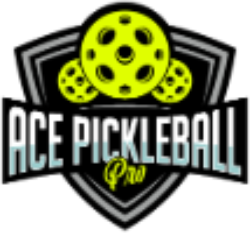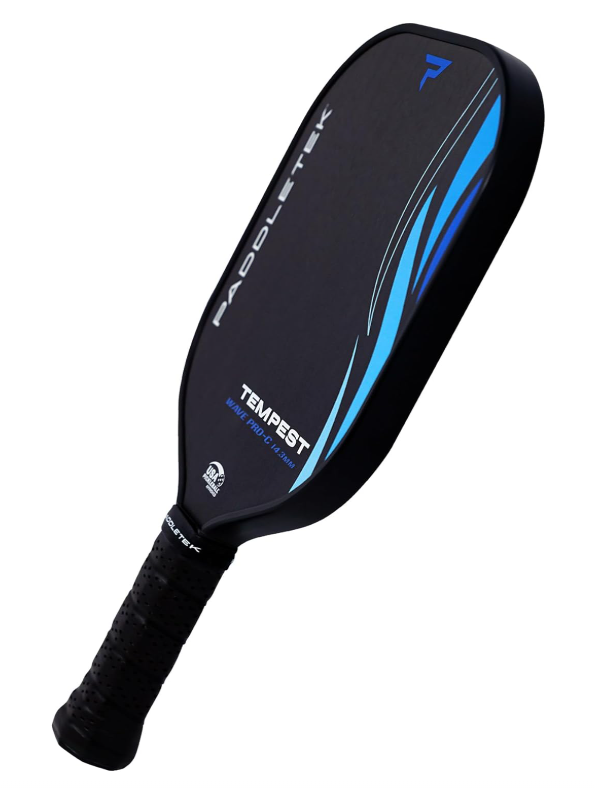Top Rated Pickleball Paddles for Tennis Players in 2025
You don’t just want a paddle—you want a weapon. Something that plays like it knows your game better than you do.
If you’re coming from tennis, you’ve got the mechanics. The footwork. The spin. The strategy. But if your paddle can’t keep up? You’ll be playing frustrated, not free.
This is your complete, expert-backed guide to the best pickleball paddles for tennis players, ranked and reviewed for power, control, spin, and pure feel. Backed by real play, not hype.
We’re not here to recommend. We’re here to arm you—and at Ace Pickleball Pro, we build every guide for crossover players who refuse to settle for beginner advice.
Elite Gear Evolution: What’s Coming Next in Pickleball Tech (2025–2030)
Based on emerging product releases, pro training trends, and smart tech already in prototype testing, this is your insider forecast into how paddle gear will evolve in the next 5 years — and why it matters most for tennis players.
Smart Paddle Innovation Forecast
| Innovation | What It Does | Why It Matters to Tennis Players |
|---|---|---|
| Smart Paddle Sensors | Tracks shot speed, sweet spot usage, grip pressure | Quantifies transition metrics like paddle lag, reaction time, and wrist efficiency |
| Haptic Feedback Handles | Vibrates subtly on mishits | Helps former racquet players adjust feel in smaller paddle surfaces |
| AI Paddle Pairing | Matches gear based on swing video + biometric input | Removes guesswork—uses tennis style to algorithmically predict ideal paddle |
| Dynamic Material Tech | Adjusts bounce based on shot type | Mimics the flex of tennis strings while staying within paddle compliance |
| Digital Twin Coaching | Syncs your gameplay to pro movement models | Bridges tennis-to-pickleball tactical gaps through AI-driven feedback |
This isn’t just tech — it’s the evolution of performance.
Strategy-Fit Typology™: Match Your Tennis Playstyle to the Right Paddle
Every tennis player brings a different instinct to pickleball. This framework helps you identify who you are as a player—and what paddle style will enhance your strengths.
| Tennis Persona | Paddle Identity | Ideal Paddle Traits |
|---|---|---|
| The Baseliner | The Blaster | Power paddle, head-heavy, Nomex core |
| The Counterpuncher | The Controller | Graphite face, large sweet spot, polymer core |
| The All-Court Player | The Shapeshifter | Balanced weight, hybrid core, textured composite face |
| The Net Rusher | The Ninja | Lightweight paddle, short grip, elongated body |
| The Spinner | The Disruptor | Textured face, ergonomic grip, mid-weight build |
Adaptive Mastery Ladder™: Evolving Your Paddle as You Improve
Your paddle needs will change as your tennis habits evolve into elite pickleball instincts. Here’s how paddle choice should shift as you level up:
| Stage | Tennis Trait | Paddle Shift | Coaching Focus |
|---|---|---|---|
| 🟢 Beginner | Full swings, grip memory | Large sweet spot, mid-weight | Focus on resets, dink mechanics |
| 🟡 Intermediate | Controlled strokes, reduced backswing | Lighter core, textured face | Master third shots, angle play |
| 🔵 Advanced | Fast NVZ hands, spin precision | Specialized paddle (spin/control/power) | Tune paddle to strategy and position |
Tennis-to-Pickleball Convergence: Building Transferable Skills
You’re not starting from scratch. You’re upgrading your strategy with new movement mechanics and paddle-specific skills.
| Domain | Tennis Skill | Pickleball Evolution |
|---|---|---|
| Biomechanics | Open-stance recovery, hip torque | Compact lateral footwork, resets |
| Neuro-Motor Control | Split-step timing, anticipation | Paddle tracking at NVZ |
| Tactical Vision | Crosscourt angles, patterns | Stack formations, dink chains |
| Gear Literacy | Swingweight, string tension | Core density, paddle flex, balance point |
Paddle Genome Project™: Biometric Paddle Matching (Coming Soon)
Next-gen paddle matching won’t be guesswork. It’ll be data-fused. This system uses your swing mechanics, grip size, and playstyle to match you with your ideal paddle.
| Input | Data Type | Gear Recommendation |
|---|---|---|
| Hand Size | Grip measurement | Handle shape + overgrip style |
| Swing Speed | Sensor/video | Core density + paddle stiffness |
| Shot Profile | Game stats | Face shape, sweet spot size |
| Wrist Mobility | Range of motion | Grip contour + weight balance |
| Reaction Time | App-based drills | Paddle class (light vs heavy) |
Top Rated Pickleball Paddles for Tennis Players in 2025
⭐ Best Pickleball Paddle for Power Players
Selkirk Vanguard Power Air
You didn’t leave your forehand on the tennis court. You brought it here. And the Power Air is the only paddle that can handle that kind of heat.
The lightweight aerodynamic frame lets you swing freely—without the drag. The carbon surface grips just enough to send that ball spinning into your opponent’s fear response.
It’s not just powerful. It’s dangerous.
Pros
- Elite power with full swing freedom
- Lightweight for fast exchanges
- Excellent spin with textured surface
- Ideal for aggressive tennis players
Cons
- Tough to control if your soft game isn’t dialed in
- Not forgiving for casual players
Pro Tip: Add lead tape to the throat for better stability in hands battles.
👉 Play full throttle. If you’ve got the swing, this paddle delivers the fire. See today’s best deal →
⭐ Best Pickleball Paddle for Control & Net Play
JOOLA Perseus 16mm
You didn’t win rallies. You orchestrated them. That mindset still wins in pickleball—if your gear lets you play with precision.
The Perseus is built for players who rely on their feel. It turns reset blocks into confidence boosters and dinks into silent threats. If you think three shots ahead, this paddle is already there with you.
Pros
- Massive sweet spot = fewer mishits
- Plush feel for perfect resets
- Great for doubles and control-based singles
- Forgiving on fast exchanges
Cons
- Lacks top-end power
- Slightly slower on reflex volleys
Pro Tip: Pair this paddle with better dink mechanics to become unshakeable at the kitchen.
👉 Total control, elite finesse. If your game is all about placement and pressure, this paddle belongs in your hand. Check availability now →
⭐ Top Pickleball Paddle for Spin Lovers
CRBN 1X Power Series
You didn’t just use spin. You shaped points with it. This paddle doesn’t just respect your spin—it amplifies it.
With a hyper-textured face and balanced build, the CRBN lets you curve, arc, roll, and slice the ball like it owes you money. You’ll control points from the NVZ or baseline like a magician with a carbon wand.
Pros
- Highest spin potential on the list
- Durable carbon face with consistent touch
- Great for both power and finesse
- Available in 13mm (power) or 16mm (touch)
Cons
- Less feel on soft shots for some players
- Pricey, especially if you don’t play often
Pro Tip: Want spin without mishits? Here’s the spin control playbook
👉 Insane spin. Clean feel. Built for players who shape every shot. View specs + reviews here →
⭐ Best Paddle for Doubles & Soft Hands
Paddletek Tempest Wave Pro
You won doubles matches in tennis by being two steps ahead. That edge still matters—especially up at the kitchen line.
The Tempest is a finesse-focused paddle made for precision play. It absorbs pace, encourages resets, and thrives in hands battles. Perfect for players who don’t rely on brute force—but always seem to win anyway.
Pros
- Featherlight feel, great for soft play
- One of the most joint-friendly paddles
- Excellent reset control
- Designed for doubles-first strategy
Cons
- Can feel underpowered at baseline
- Spin is limited without wrist action
Pro Tip: This is the paddle for players with tennis elbow or wrist pain. Explore other paddles built for injury prevention
👉 If you live at the net and win with patience, this paddle will feel like home. Get yours before it’s gone →
⭐ Top Affordable Pickleball Paddle for Beginners
Onix Z5 Graphite
You’re not “new” to racket sports. You just need something that works from Day 1—without costing Day 15’s lunch budget.
The Z5 is a proven starter paddle that’s fast, light, and easy to trust. It won’t win medals—but it will help you win your early games, build feel, and grow into your playstyle with zero fuss.
Pros
- Light and fast for developing control
- Affordable, reliable classic
- Good for learning resets and swing timing
- Great for tennis converts trying out pickleball
Cons
- Lower spin and power ceiling
- Small sweet spot punishes mishits
Pro Tip: Use an overgrip to tweak feel and reduce shock—your wrist will thank you.
👉 Reliable, fast, and easy to play with — this is how smart players start strong. See color options + ratings →
Pickleball Paddle Comparison Table (2025)
| Paddle | Best For | Power ★ | Control ★ | Spin ★ | Weight Feel | Skill Level |
|---|---|---|---|---|---|---|
| Selkirk Vanguard Power Air | Power players, singles | ★★★★★ | ★★☆☆☆ | ★★★★☆ | Light | Intermediate – Advanced |
| JOOLA Perseus 16mm | Control players, doubles | ★★☆☆☆ | ★★★★★ | ★★☆☆☆ | Medium | Intermediate – Advanced |
| CRBN 1X Power Series | Spin-heavy all-court players | ★★★★☆ | ★★★☆☆ | ★★★★★ | Balanced | Intermediate – Advanced |
| Paddletek Tempest Wave Pro | Net players, finesse | ★★☆☆☆ | ★★★★☆ | ★★☆☆☆ | Medium | Beginner – Intermediate |
| Onix Z5 Graphite | Beginners, budget buyers | ★★☆☆☆ | ★★☆☆☆ | ★★☆☆☆ | Very Light | Beginner |
Frequently Asked Questions: Best Pickleball Paddles for Tennis Players
What is the top rated pickleball paddle in 2025?
For power, the Selkirk Power Air tops the charts. For control and reset finesse, the JOOLA Perseus 16mm is the highest rated.
👉 Compare all top-rated paddles here
What’s the best pickleball paddle for former tennis players?
It depends on your style:
- Power hitter → Selkirk Power Air
- Net strategist → Tempest Wave Pro
- Spin specialist → CRBN 1X
👉 Match your paddle to your game
What’s the difference between 13mm and 16mm paddles?
- 13mm = more pop and speed
- 16mm = more control and forgiveness
Are expensive pickleball paddles worth it?
If you’re serious about play? Yes. They offer better materials, feel, and performance. But for new players, solid options like the Onix Z5 are a smart entry point.
Where can I buy or demo these paddles?
Check out our full paddle buying guide for trusted sources and demo programs.
Final Serve: Choose a Paddle That Matches Your DNA
You’re not just switching sports—you’re evolving your game. The right paddle won’t just help you win—it’ll help you feel like yourself again on the court.
👉 Explore all top pickleball paddles
👉 Return to Ace Pickleball Pro Homepage
👉 Not sure where to start? Read our complete paddle selection guide





